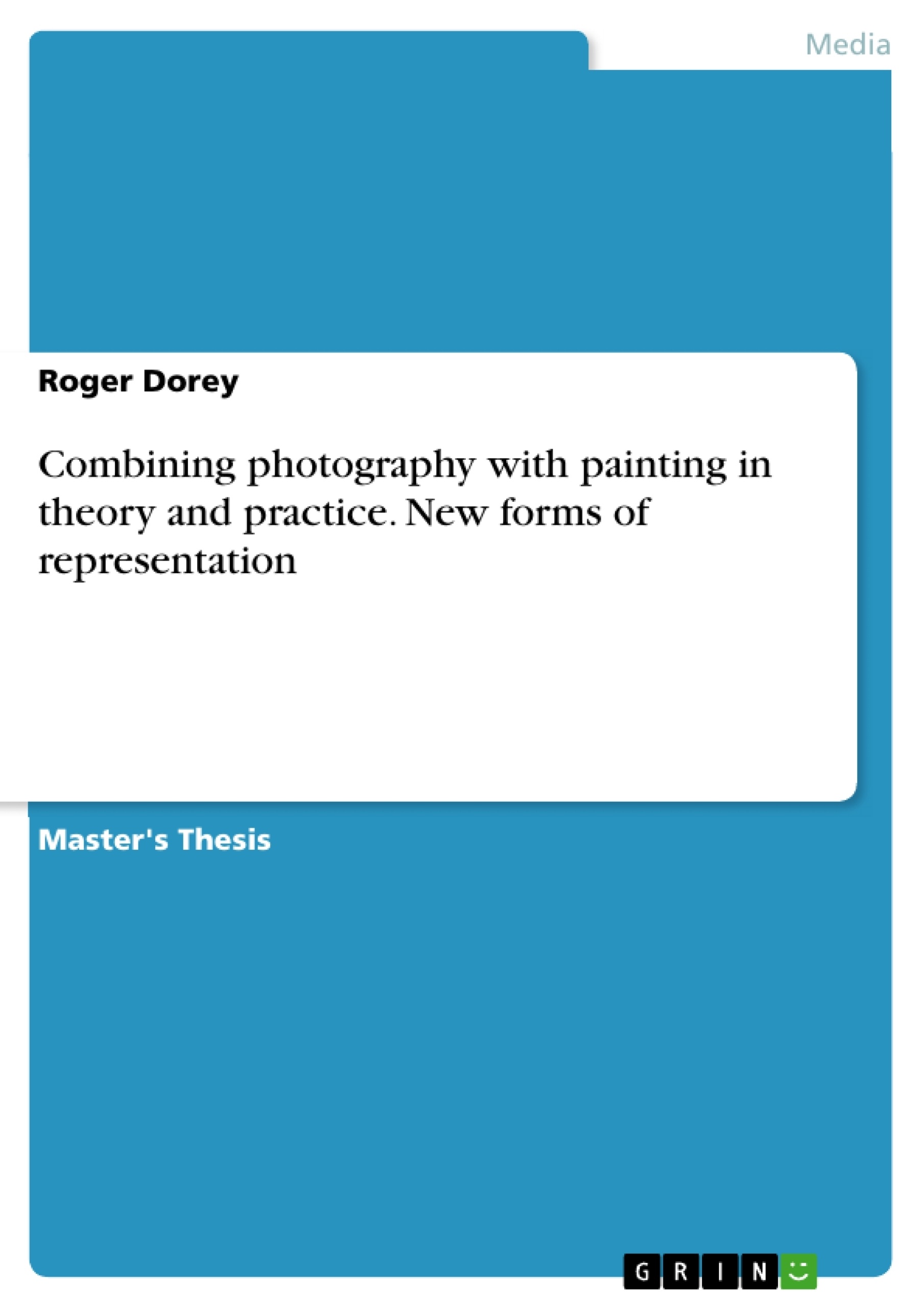In order to satisfy cultural demands for artists to recognise their responsibilities towards cultural misrepresentations issues relating to ethics, ethnicity, religion and sexuality, new
forms of representation are being formulated. Through the practice of photography, chirography and other media and the theme of the female shoe, this research can explore these
and other related issues that question the position we find ourselves in, and hopefully increases the important debate surrounding the future of photographic practices.
The research has revealed that there are two approaches to the ways in which photographic and chirographic combinations can be evaluated. One where photographic based images
simulate the visual appearance of chirographic media in various forms and secondly where chirographs imitate the visual appearance of photographs. In addition it can also be concluded that as a result of this investigation, and through employing the concept of contiguity, the additional reference has been made to 'imprints' such as vacuum-formed images. In these cases the research reveals that it is this particular kind of indexical emphasis [rather than iconic] that gives it its connotative power and in doing so aligns itself with Post-modern theories.
Table of Contents
- List of Illustrations
- Abstract
- Synopsis
- Chapter 1 Methodology
- Chapter 2 The role of the photograph
- Chapter 4 The relationship of theory to practice
- Chapter 5 Images and evaluation
- Chapter 6 Conclusion (evaluation & outcomes)
- Bibliography
Objectives and Key Themes
This research portfolio explores the intersection of photography and painting, aiming to demonstrate how these mediums can be effectively combined to create a unique and compelling artistic vision. The work investigates the role of photography as a source of inspiration and reference, examining how photographic imagery can inform and influence the creative process in painting.
- The relationship between photography and painting
- The use of photographic imagery in painting
- The influence of photographic aesthetics on artistic practice
- The role of theory in informing artistic practice
- The evaluation of artistic outcomes
Chapter Summaries
- Chapter 1 Methodology: This chapter outlines the research methodology employed in the portfolio, exploring the theoretical frameworks and practical approaches used to investigate the relationship between photography and painting. It discusses the research questions and the methods of data collection and analysis.
- Chapter 2 The role of the photograph: This chapter delves into the significance of photography as a source of inspiration and reference for painting. It examines historical examples of artists who have incorporated photographic imagery into their work, exploring the different ways in which photography has influenced artistic practice.
- Chapter 4 The relationship of theory to practice: This chapter explores the connection between theoretical frameworks and practical artistic practice. It examines how theoretical concepts and ideas can inform and guide the creative process, demonstrating how theory can be applied to the combination of photography and painting.
- Chapter 5 Images and evaluation: This chapter presents a selection of the artist's own work, showcasing the practical outcomes of the research. It discusses the artistic decisions made in the creation of these images and provides a critical evaluation of the work, reflecting on its strengths and weaknesses.
Keywords
This research focuses on the intersection of photography and painting, exploring the role of photographic imagery in artistic creation. Key concepts include the influence of photographic aesthetics on artistic practice, the relationship between theory and practice, and the evaluation of artistic outcomes. The work also draws upon historical examples of artists who have incorporated photography into their work, examining the various ways in which these mediums have influenced each other.
- Quote paper
- Roger Dorey (Author), 2001, Combining photography with painting in theory and practice. New forms of representation, Munich, GRIN Verlag, https://www.grin.com/document/320656



